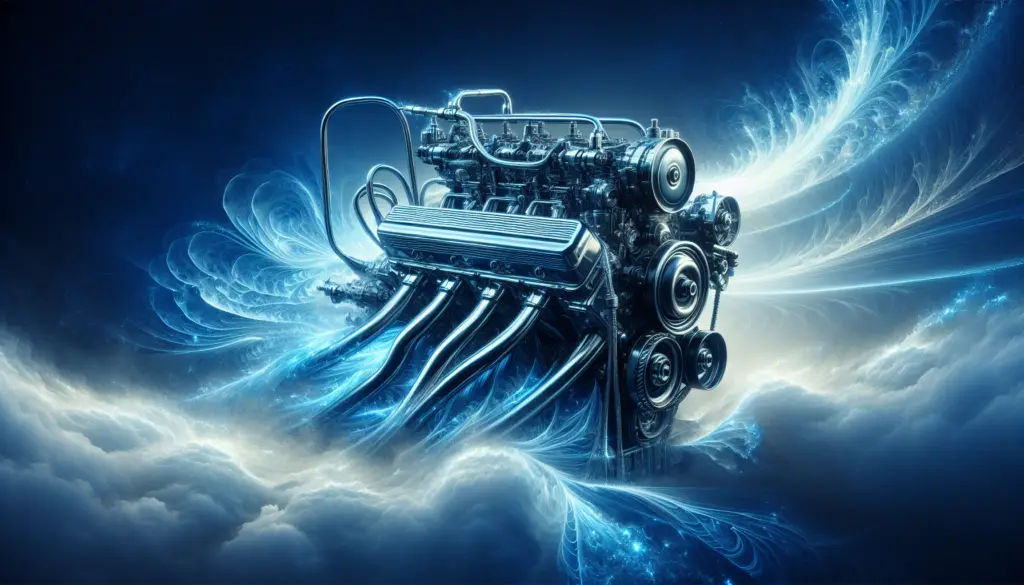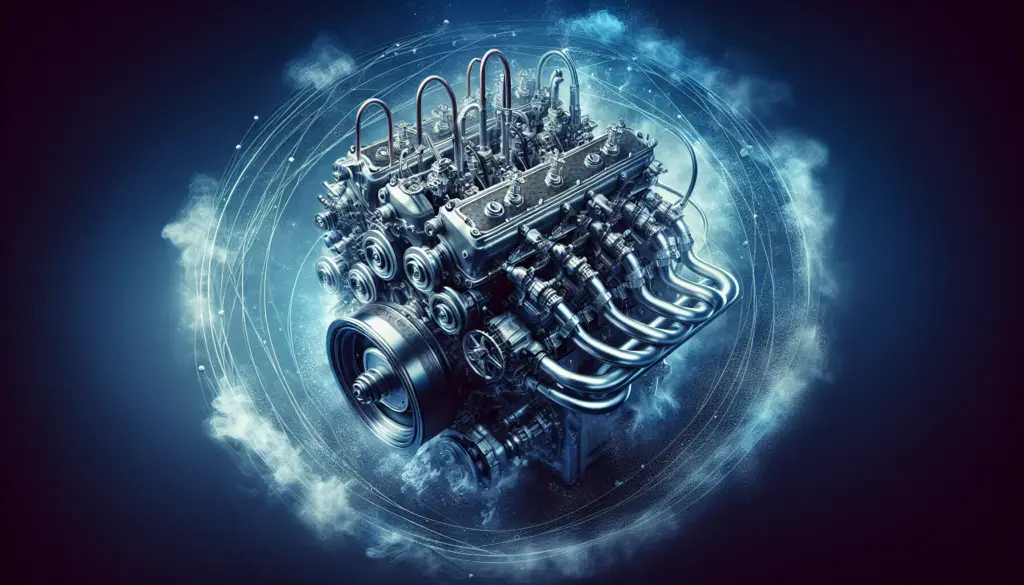Imagine the thrill of gliding over the open waters, the wind in your hair and the sense of freedom that comes with controlling a powerful boat. But what if there was a way to take that exhilaration to the next level? Enter the world of Nitrous Oxide Systems for boat engines. In this article, you will discover how these systems work, the benefits they offer, and how they can transform your boating experience into something truly extraordinary. Get ready to be amazed as we delve into the fascinating world of nitrous oxide systems for boat engines.

Benefits of Nitrous Oxide Systems for Boat Engines
Increased Power Output
One of the major benefits of using nitrous oxide systems in boat engines is the significant increase in power output. By introducing nitrous oxide into the combustion chamber, the oxygen levels are greatly increased, allowing for a more efficient fuel burn. This results in a higher power output, giving your boat that extra boost it needs.
Improved Acceleration
Nitrous oxide systems can provide a noticeable improvement in acceleration for boat engines. The added oxygen content allows for a more complete combustion process, generating more power and torque. This means that your boat can reach higher speeds in a shorter amount of time, giving you a thrilling and exhilarating experience on the water.
Better Fuel Efficiency
Contrary to popular belief, nitrous oxide systems can actually improve fuel efficiency in boat engines. By increasing the amount of oxygen available during combustion, the engine can achieve a more complete and efficient burn of the fuel. This means that you can enjoy increased performance without sacrificing fuel economy. Nitrous oxide systems can help you get the most out of your boat while minimizing your impact on the environment.
Types of Nitrous Oxide Systems
Wet Nitrous Systems
Wet nitrous systems are the most commonly used type of nitrous system for boat engines. These systems introduce both nitrous oxide and additional fuel into the intake manifold. The additional fuel ensures that the nitrous oxide is properly combusted, preventing lean conditions and potential engine damage. Wet nitrous systems offer a convenient and reliable way to add power to your boat engine.
Dry Nitrous Systems
Dry nitrous systems, on the other hand, only introduce nitrous oxide into the intake manifold. The engine’s existing fuel system is responsible for supplying the necessary fuel to support the increased oxygen levels. Dry nitrous systems are a more simplistic option and are often favored for their ease of installation and lower cost. However, they may require additional tuning and can be less forgiving if not properly calibrated.
Direct Port Nitrous Systems
Direct port nitrous systems are the most advanced and precision-oriented option for boat engines. Instead of injecting nitrous oxide into the intake manifold, these systems have separate nozzles for each individual cylinder. This allows for a more precise distribution of nitrous oxide and fuel, maximizing power and ensuring equal distribution across all cylinders. Direct port nitrous systems offer unmatched control and performance.

Installation and Setup
Choosing the Right Nitrous Kit
When installing a nitrous oxide system in your boat engine, it is crucial to choose the right kit for your specific needs. Consider factors such as the desired power increase, engine size, and any existing modifications. It is recommended to consult with a knowledgeable professional or a reputable nitrous oxide system manufacturer to ensure compatibility and optimal performance.
Positioning the Nitrous Bottle
Proper positioning of the nitrous oxide bottle is essential for safety and performance. The bottle should be securely mounted in a location that allows for easy access and inspection. It should be positioned away from any heat sources or moving parts to prevent damage or potential leaks. Additionally, ensure that the bottle is correctly oriented and that the pressure relief valve is facing the appropriate direction.
Installing the Nitrous Nozzles
The installation of nitrous nozzles requires careful consideration and precision. These nozzles are responsible for injecting the nitrous oxide and fuel into the intake manifold or cylinders. It is crucial to follow the manufacturer’s instructions and recommendations for proper placement and alignment. Improper nozzle installation can result in uneven distribution, poor performance, or even engine damage.
Safety Measures and Precautions
Understanding the Nitrous Oxide Safety Features
Before operating a nitrous oxide system in your boat engine, it is vital to familiarize yourself with the safety features and precautions. Nitrous oxide systems typically include safety devices such as pressure relief valves, blow-off valves, and purge systems. These features help ensure safe operating conditions, prevent excessive pressure buildup, and allow for the controlled release of nitrous oxide if necessary.
Regular Maintenance and Inspection
Regular maintenance and inspection of your nitrous oxide system are crucial for both performance and safety. It is recommended to follow the manufacturer’s guidelines for maintenance intervals and procedures. This may include replacing filters, inspecting lines and fittings for leaks, and checking the condition of components such as solenoids and nozzles. Regular inspections help identify any potential issues before they become major problems.
Importance of Proper Tuning
Proper tuning is essential when using a nitrous oxide system in your boat engine. Each engine has unique characteristics and requirements, and tuning ensures that the system operates optimally. Adjustments to fuel and nitrous oxide jetting, ignition timing, and air-fuel ratios may be necessary to achieve the desired performance without risking engine damage. It is recommended to seek professional assistance or consult with experienced tuners to ensure safe and effective tuning.

Common Misconceptions about Nitrous Oxide Systems
Nitrous Oxide as an Explosive
One common misconception about nitrous oxide systems is that nitrous oxide is explosive. While nitrous oxide itself is not flammable, it does provide additional oxygen, which can potentially enhance the combustion process. However, when used properly and within the manufacturer’s guidelines, nitrous oxide systems are safe and reliable. The safety features incorporated into these systems help prevent any dangerous situations.
Damage to Boat Engines
Another misconception is that nitrous oxide systems can cause damage to boat engines. When properly installed, maintained, and operated, nitrous oxide systems do not pose any significant risk to the engine. The key is ensuring that the system is correctly calibrated and that the engine is in good overall condition. Regular maintenance, proper tuning, and adherence to safety measures are essential to avoid any potential issues.
Illegal Use of Nitrous Oxide Systems
There is a common misconception that the use of nitrous oxide systems in boats is illegal. While regulations may vary in different jurisdictions, the use of nitrous oxide systems is generally permitted for recreational and racing purposes. It is important to check local regulations and comply with any applicable rules and restrictions. Using nitrous oxide systems responsibly and within the legal framework ensures a safe and enjoyable experience.
Popular Brands and Models
Zex Nitrous Systems
Zex Nitrous Systems is a well-known and respected brand in the world of nitrous oxide systems. Their product lineup includes a wide range of kits to suit different engine sizes and performance requirements. Zex Nitrous Systems are known for their reliability, ease of installation, and advanced features such as adjustable nitrous activation and progressive nitrous control.
NOS Nitrous Oxide Systems
NOS Nitrous Oxide Systems is another leading brand that offers a diverse selection of nitrous oxide systems for boat engines. With their extensive experience and expertise in the field, NOS Nitrous Oxide Systems provide high-quality and performance-oriented products. Their kits feature innovative designs, advanced technology, and comprehensive tuning options.
Edelbrock Nitrous Systems
Edelbrock Nitrous Systems is a trusted name in the automotive aftermarket industry, and their nitrous oxide systems are highly regarded. Their boat engine nitrous oxide systems are designed to deliver exceptional power gains and improved performance. Edelbrock Nitrous Systems prioritize ease of installation, user-friendly operation, and overall reliability, making them a popular choice among boat enthusiasts.

Costs and Considerations
Initial Investment
The cost of a nitrous oxide system for a boat engine can vary depending on the brand, model, and specific requirements. Generally, the initial investment includes the price of the kit, installation accessories, and any additional components or upgrades. It is important to consider the long-term benefits and performance gains when evaluating the initial cost of a nitrous oxide system.
Operating Expenses
In addition to the initial investment, operating expenses should also be taken into account. This includes the cost of nitrous oxide refills, which will vary depending on usage and local availability. Regular maintenance and inspection costs, along with any necessary replacement components, should also be factored in. Despite these ongoing costs, the benefits and performance enhancements provided by nitrous oxide systems often outweigh the expenses.
Long-Term Benefits
While there are costs associated with nitrous oxide systems, the long-term benefits should not be overlooked. The increased power output, improved acceleration, and better fuel efficiency can enhance your boating experience and provide a competitive edge in racing applications. Additionally, the reliability and durability of modern nitrous oxide systems ensure that the investment pays off in the long run.
Application and Performance
Drag Racing Boats
Nitrous oxide systems are commonly used in drag racing boats to gain a competitive advantage. The increased power output and improved acceleration provided by these systems allow boats to reach higher speeds in shorter distances. Drag racing boats equipped with nitrous oxide systems can quickly accelerate off the starting line and maintain higher speeds throughout the race.
Performance Cruisers
For performance cruisers, nitrous oxide systems offer an opportunity to enhance the overall performance and enjoyment of the boat. The increased power and improved acceleration can make cruising more exciting and allow the boat to tackle challenging conditions with ease. Nitrous oxide systems can transform a regular cruising boat into a thrilling and high-performance vessel.
Professional Racing Boats
Professional racing boats demand the highest levels of performance and reliability, and nitrous oxide systems are a common addition to these high-performance vessels. The ability to achieve instant and significant increases in power output gives professional racing boats a competitive edge. With careful tuning and calibration, nitrous oxide systems can help professional racers achieve record-breaking speeds and dominate the competition.

Nitrous Oxide Systems and Environmental Impact
Air Pollution and Emissions
While nitrous oxide systems offer significant performance benefits, it is important to consider their potential environmental impact. Nitrous oxide, also known as laughing gas, is a greenhouse gas that contributes to global warming. However, when used responsibly and in conjunction with proper tuning, nitrous oxide systems can still provide improved fuel efficiency, resulting in reduced emissions of other harmful pollutants.
Impact on Marine Life
The use of nitrous oxide systems in boat engines can potentially have an impact on marine life. In areas where boating is popular, increased boat traffic and associated emissions can disturb marine ecosystems and contribute to water pollution. It is important for boaters to be mindful of their environmental footprint and take measures to minimize any potential negative effects on marine life.
Sustainable Alternatives
For boaters concerned about the environmental impact of nitrous oxide systems, there are sustainable alternatives to consider. Advanced hybrid propulsion systems, for example, combine fuel-efficient engines with electric motors, reducing reliance on traditional combustion engines. Renewable energy technologies, such as solar or wind power, can also be used to supplement or replace traditional engine power, further reducing emissions and environmental impact.
Future Trends in Nitrous Oxide Systems for Boat Engines
Advancements in Nitrous Injection Technology
As technology continues to evolve, advancements in nitrous injection technology can be expected. These advancements may include more precise control over the delivery of nitrous oxide and fuel, as well as improved efficiency and reliability. The development of more advanced nitrous oxide injection systems can push the boundaries of engine performance and provide boaters with even greater power gains.
Integration with Hybrid Propulsion Systems
The integration of nitrous oxide systems with hybrid propulsion systems is another trend that may emerge in the future. Hybrid systems that combine traditional engines with electric motors can already provide significant fuel efficiency improvements. By incorporating nitrous oxide systems into these hybrid setups, boaters may be able to further enhance performance and achieve even greater power gains.
Regulatory Changes and Standards
Regulatory changes and standards relating to the use of nitrous oxide systems in boat engines may continue to evolve in the future. As environmental concerns become more prominent, regulations may be introduced to limit emissions and ensure responsible use of nitrous oxide systems. It is important for boaters to stay informed about any changes in regulations and comply with the latest standards to ensure both safety and sustainability.

